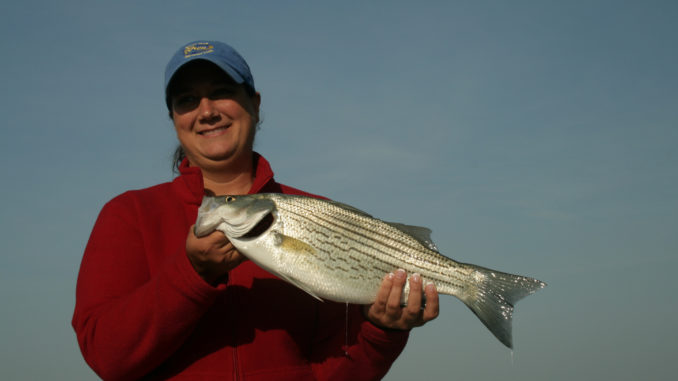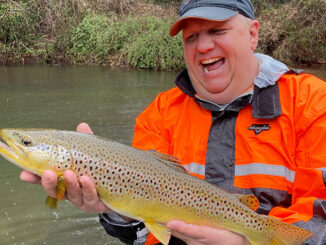
Striper problems in recent years cause Commission’s change of attitude
Fisheries biologists with the N.C. Wildlife Resources Commission on Wednesday stocked 162,500 hybrid striped bass into Lake Norman, marking a shift in the agency’s management of the 32,510-acre reservoir from a striped bass fishery to a hybrid striped bass fishery.
The Commission has traditionally stocked striped bass into the reservoir each year. Over the past 10 years, however, striped bass have routinely suffered from summertime kills related to its habitat preferences and feeding habits.
“Striped bass follow river herring, their preferred food, to the cold, deep layer of the reservoir to feed,” said Brian McRae, the Commission’s Piedmont Region fisheries supervisor. “However, as the summer progresses, this deep layer eventually turns into a type of ‘oxygen bubble’ that is created when the middle layer of the water column loses oxygen faster than the deep layer. When the deep layer, or oxygen bubble, eventually runs out of oxygen, the fish are trapped and die.”
The hybrid striped bass that the Commission stocked are a cross between female striped bass and male white bass. Hybrid striped bass are considered more resilient to warmer water temperatures than striped bass and generally are expected to remain in the upper layer of the lake during the summer. However, hybrid striped bass, too, will succumb to a depleted oxygen bubble if their feeding habits and summer habitat preferences mimic those of striped bass.
Before deciding to stock hybrids in Lake Norman, Commission staff met with anglers to determine angler preferences as well as reviewed literature and talked with biologists from other state and federal agencies to gain a better understanding of the summer habitat preferences of hybrid striped bass compared to striped bass.
“Recent research … as well as observations from deep water striped bass kills in other reservoirs, proved very informative,” McRae said. “Based on this information, Commission staff expects that hybrid striped bass will not utilize the deep-water habitat and suffer mortality at the same frequency or magnitude as compared to striped bass during years of severe reservoir stratification at Lake Norman.”
Commission staff will monitor the hybrid striped bass fishery annually to determine if the hybrid striped bass fishery is a success.
“We will consider the hybrid striped bass fishery successful if three criteria are met,” McRae said. “First, body condition of hybrid striped bass is significantly better than what we have historically observed for striped bass. Second, summer mortality of the hybrids is minimal. Third, hybrid striped bass escapement downstream is negligible.”
If one or more of these criteria are not met, the Commission will re-evaluate managing for hybrid striped bass in Lake Norman.
The current regulations for hybrid striped bass and striped bass at Lake Norman allow anglers to harvest four fish in aggregate that are 16 inches or larger from Oct. 1 to May 31 and to harvest four fish in aggregate with no minimum size limit from June 1 to Sept. 30. Commission staff is evaluating a proposed regulation change to extend the 16-inch size limit through the summer months because catch-and-release mortality is expected to be less of a concern for hybrid striped bass than striped bass during the summer.




Be the first to comment